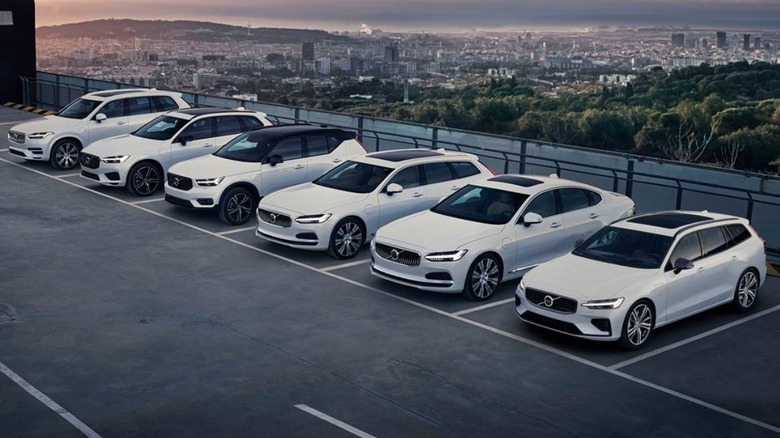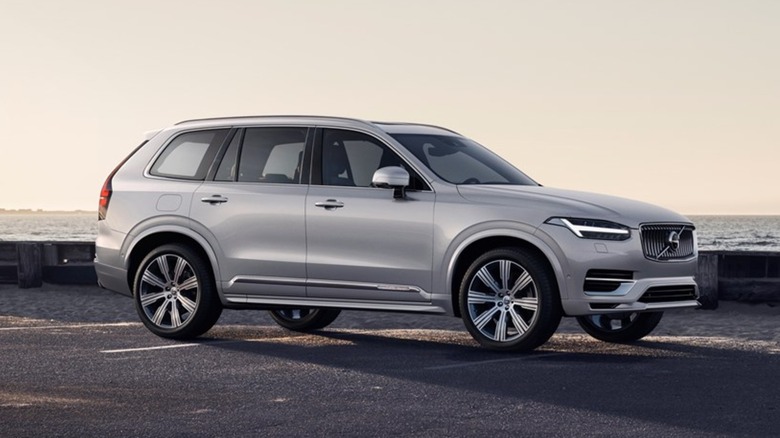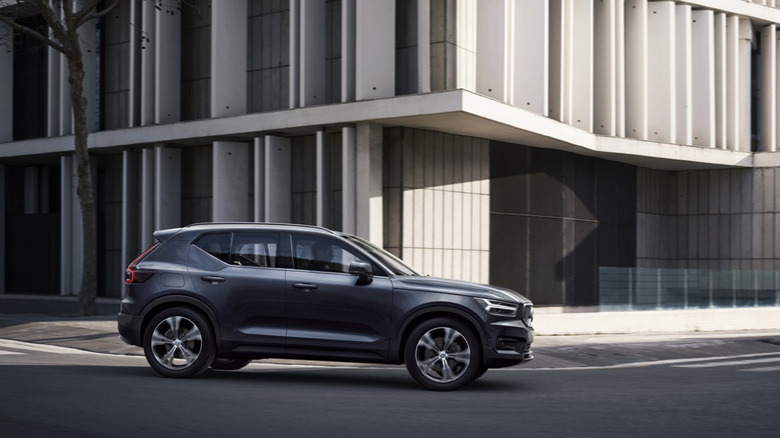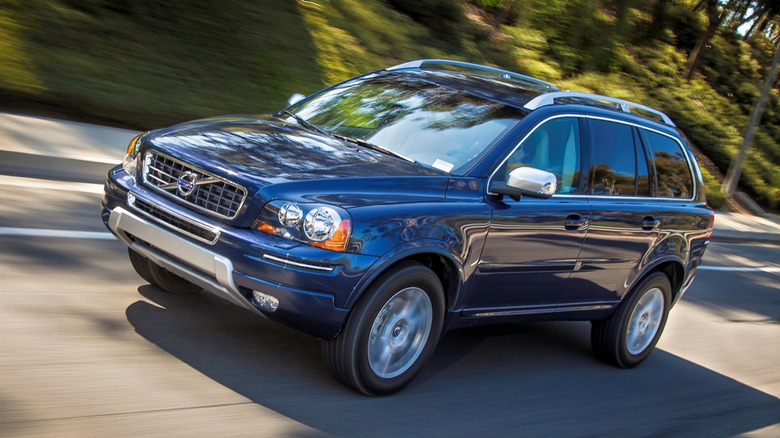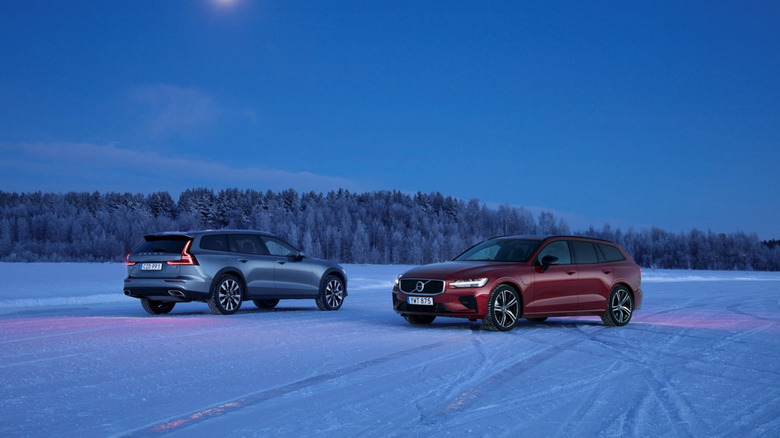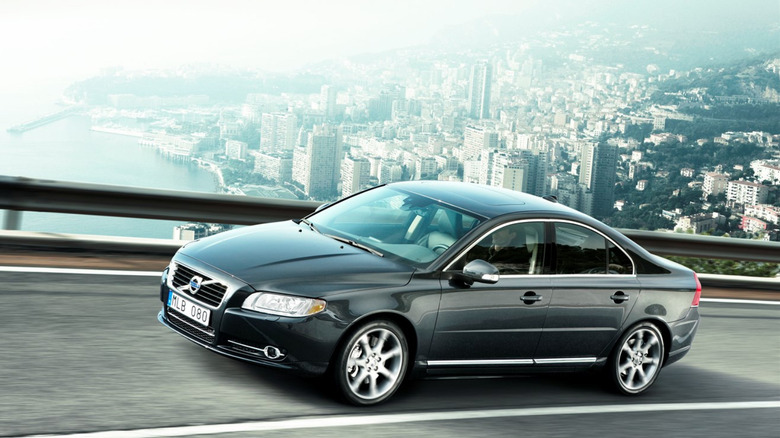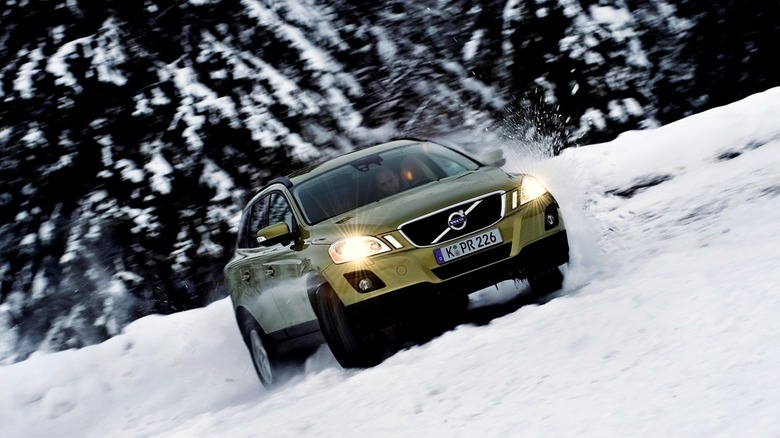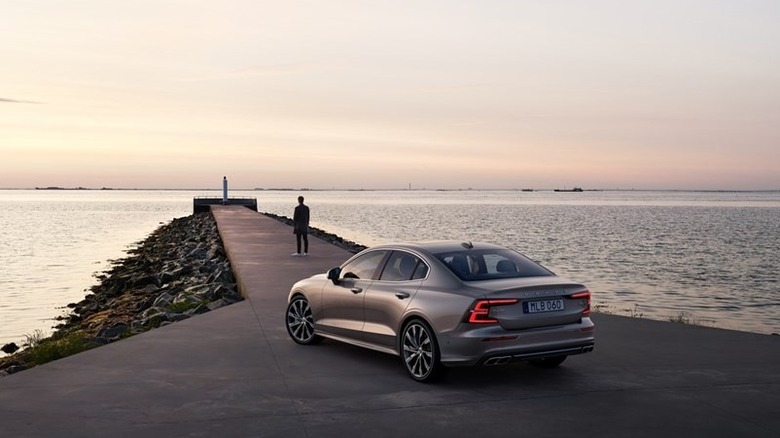7 Of The Most Reliable Volvo Models Ever Built, Ranked
Volvo has a history of pioneering car safety. In 1959, they invented the three point seat belt and gave the technology to the world for free. They also introduced seat-mounted airbags, the rear-facing child seat, and were early adopters of blind spot monitoring, among many other innovations.
The company is so dedicated to safety that if a major accident involves a Volvo, they send a team to investigate. If it happens within 45 minutes of Volvo's headquarters in Sweden, their on-call Traffic Accident Research Team rushes to the scene to assist and collect data. This attention to detail makes Volvos a pleasure to own — though some models more than others. If you're looking into owning a Volvo, this article covers the seven most reliable Volvos ever made.
We based our rankings primarily on J.D. Power's Quality & Reliability Score, then cross-checked with recall data from NHTSA and Euro NCAP as well as longevity stats from iSeeCars. Repair costs from open-source claims and RepairPal were also factored in, with lower costs ranking higher. Lastly, we considered consumer feedback from Kelley Blue Book, Edmunds and Consumer Reports. Here are the Volvos to look for if you want to buy a car that will last.
2020 Volvo XC90
The XC90 has been Volvo's largest SUV offering since it was first introduced in 2002, and is currently the third-best selling Volvo The model received a major overhaul in 2016, and 2020 was another mid-cycle update. J.D. Power gives this model year a reliability score of 77 out of 100, and Edmunds and Kelley Blue Book both award it 4 out of 5 stars in the consumer rating category. RepairPal says that the average cost of maintaining it would be $851 per year.
The 2020 Volvo XC90 has one of the highest J.D. Power reliability ratings on our list, but we ranked it lower because it's had six recalls issued so far, though none of them were critical. Stateside, we got three main engine variants, called the T5, the T6, and the T8. The T5 is a 2.0-liter inline-four turbocharged unit making 250 horsepower. The T6 is the same but supercharged to produce 316 hp while the T8 is both turbocharged and supercharged, with an e-motor making 400 horsepower. That said, our friends across the pond in Europe got nine trims, including three diesel ones.
The engine, regardless of trim, was mated to an eight-speed automatic transmission that passed that power through a torque converter before sending it to the wheels. You should see fuel averages between 26 and 30 mpg depending on your engine variant. In addition, the 2020 XC90 comes with lots of creature comforts as standard, including dual-zone climate control, the voice-activated Sensus infotainment touchscreen, an air quality system, power tailgate, and several driver assists.
2021 Volvo XC40 - ICE Variant
The XC40 is currently Volvo's second-best selling model worldwide. It was the smallest SUV offered by Volvo until the arrival of the EX30, and has only had minimal visual updates since its introduction.
J.D. Power gives the 2021 XC40 a relatively high reliability score of 79 out of a 100, but you can't really go wrong with any year. The 2024 and 2025 XC40s come in at 74 points each, 2020 at 76, and 2022 at 70. So as long as you avoid the 2019 teething problem years, your XC40 will be rock-solid. Edmunds consumer ratings give it a 3.5 out of 5 overall, and Kelley Blue Book gives it a stellar 4.6 out of five. It's not too expensive to maintain either, with CarEdge estimating the annual maintenance to be $1,200 a year.
The 2021 XC40 was offered with three main powertrain options in America – the T4, T5, and the Recharge. The T4 made 187 horsepower, the T5 made 248 horsepower and the Recharge made 402 ponies. Both gas engines were 2.0-liter, turbocharged units, mated to an eight-speed automatic transmission. The smaller T4 was front-wheel drive only, but the T5 and Recharge versions had AWD as standard. Overall, it's a compact, reliable, zippy SUV that also happens to be one of the safest cars on the planet, with only three NHTSA recalls so far.
2013 Volvo XC90
As we mentioned, the XC90 has been around for a little over two decades so far. The 2013 model year looks a bit dated today, but remains one of the most reliable Volvo models ever made, with a stellar zero NHTSA recalls. It also boasts only 11 NHTSA complaints, which averages to less than one per year since its launch. Its J.D. Power reliability score is 78, its Edmunds consumer score is 4.2 out of 5, the Kelley Blue Book score is 4.1.
For those looking for a reliable Volvo on a budget, this one is for you. The maintenance costs are also very manageable, with RepairPal estimating that it'll run you about $859 each year. The 2013 was the second-last year of the first-generation XC90, and as such, had ironed out most of the kinks from the earlier years, as 2004 to 2008 models are more problematic.
The 2013 model year could come with heated leather seats, an inbuilt child seat, wood veneers on the inside, and other high-quality materials. Still, a major selling point on this car was its 240 horsepower, 236 lb-ft 3.2-liter inline six engine that was transversely mounted. All variants came mated to an automatic transmission that had a manual mode, that was surprisingly handy off-road.
2020 Volvo V60 Cross Country
Volvos may be known for their safety, but they're just as well-known for their station wagons. The popular V60 was introduced in 2010 and received no major updates until 2019, when it was overhauled. The 2019 model year was pretty solid, but had a few reliability and comfort issues that were ironed out in the 2020 generation. Thus, the 2020 Volvo V60 is old enough to have great deals, modern looks, and ironed out all the kinks that came with the facelift. J.D. Power gives it a 77 in reliability and both its Edmunds consumer rating and Kelley Blue Book ratings are 4.5 out of 5.
The NHTSA has logged only two recalls for it, and just five complaints, out of which three were for the brakes needing replacement. Add to that a fairly reasonable annual maintenance estimate of $1,130 by CarEdge, and you've got a rather reliable, good-looking, go-anywhere station wagon that came with one of the best infotainment systems in the game.
The particular trim we're recommending is called the Cross-Country and it joins two other V60 trims. All 2020 V60s came with an inline four-cylinder engine with a 2.0-liter displacement. Depending on your spec, you'd get either a turbocharged engine, or one that was both supercharged and turbocharged. The lowest horsepower variant made 250 HP, and the highest, the Polestar-engineered PHEV, made 415. Across the board you got the same eight-speed automatic transmission as the rest of the Volvo V-series lineup.
On owners' forums, the common consensus for 2020 model year V60 is that if you can find one, grab it. If you can find one with an extended warranty to cover the brakes, grab it with both hands.
2010 Volvo S80
2010 was truly a crazy year for cars. Volkswagen had put a V10 in the Touareg and a W8 in the Passat. When that car didn't sell, they doubled down with the W12 Phaeton, and for good measure stuck the W12 in the Touareg. Volvo, not to be left behind, decided to also offer a V8 option in their flagship sedan, the S80. The second generation, introduced in 2007, was based on Ford's C1-plus platform, which meant that the S80 shared design elements with the Ford Galaxy and S-Max minivan.
It has had five NHTSA recalls to date, and an Edmunds consumer score of 4.9 out of a total of 5, the highest on our list. The annual maintenance on one of these will cost you about $650, says RepairPal – not too bad for a car that has a J.D. Power reliability score of 87 out of 100 and an iSeeCars score of 8.2 on 10.
The standard powertrain in this car was the trusty 235 hp, 236 lb-ft, 3.2-liter inline-six engine that was found in a lot of other Volvos of the time. The base variant was FWD only. In addition to that, you had two other engine variants. One was the exact same 3.2-liter engine but with all-wheel drive, while the third and final option was the most powerful — a 4.4-liter V8 that made 311 horsepower and 325 lb-ft of torque.
In addition, you were spoilt for choice when it came to options, including among other things automatic sun curtain as well as power-adjustable seats that were heated, ventilated, or massaging. Truly one of the more unique Volvo models out there.
2011 Volvo XC60
The XC60 is Volvo's premier midsize crossover offering. With the 2011 model, you got front-wheel drive standard, though AWD was optional. You could choose from a naturally aspirated 3.2-liter V6, a 3.0-liter turbocharged inline-six, or a turbocharged 2.0-liter inline-four. This model year has a J.D. Power reliability score of 81 on 100, and annual maintenance won't cost you much more than $700, according to RepairPal. The NHTSA has issued only four recalls for the model year, with 36 complaints lodged.
However, a third of all complaints were minor issues regarding battery and wipers problems. The 2010 XC60 is one of the better Volvos for off-roading, and has a very high Edmunds consumer score rating of 4.8 out of a total of five. The T6 variant, which comes with the 3.0-liter inline-6 turbocharged engine, can make 300 hp.
It is also a very comfortable daily cruiser, with MacPherson struts in the front coupled with coil springs, hydraulic shock absorbers, and a stabilizer bar as well as independent suspension in the rear. With that comfortable suspension setup you could get your interior in three levels, namely Full Textile, T-Tec, and Full Leather.
2021 Volvo S60
The 2021 S60 is one of only three cars on this list that hit the 80 point mark on J.D. Power, coming in at exactly 80 out of 100 in reliability. The last time an S60 scored that high was back in 2012, with the second-gen S60. The 2021 year features a great blend of modern styling, excellent interiors, and the much appreciated Sensus infotainment system.
For a modern and luxurious executive sedan, the maintenance is downright reasonable at $750 yearly according to RepairPal. Furthermore, the NHTSA has only recorded two recalls and only three complaints — impressive, given that it now has so many more components with the potential to cause problems. Its Edmunds consumer score is 3.8 out of 5 and Kelley Blue Book's experts rate it 3.9 out of 5, but the consumer score on KBB sits at a solid 4.4.
The S60 for 2021 comes in eight different trim levels, all gasoline powered. The engine remains the same, a 2.0-liter inline-four that's either only turbocharged, or supercharged and turbocharged. The lowest horsepower version is the B3 at 163 hp, and the highest is the Polestar-Engineered (PE) version at 405 hp. B-series trims come with a 10 kW, 40 Nm electric motor, while T-series and PE trims get a beefier 65 kW, 240 Nm motor.
It has a somewhat leisurely 0-60 time of about nine seconds on the base model, but if you get the T8 twin engine, that number becomes a rather quick 4.5 seconds.
How did we choose these cars?
We used five data points when determining what cars to put on this list. The most weight was given to the model's Quality & Reliability rating by J.D. Power. We also cross referenced the entire J.D. Power Dependability awards database to see if any cars on our list had an award — if yes, this ranked them higher.
Then, we looked at recall information from Volvo official and the NHTSA for each model we've listed. We also looked at Euro NCAP data. Models with the fewest recalls or minor safety issues ranked higher. Next we looked at longevity and high-mileage survivability using iSeeCars data for longevity. Models that are stated to last longer were ranked higher. Also, consumer ratings from Kelley Blue Book and Edmunds were used.
We also examined common repair costs and issues. For this we looked at open-source claims data from insurance providers to see the average repair cost for each model we listed. We also looked to see if a particular model had a higher percentage of claims on a particular component, such as the engine, gearbox, electricals, fuel systems, or braking. We looked for a low number of claims to begin with, and that the claims are fairly spread out across the five components.
